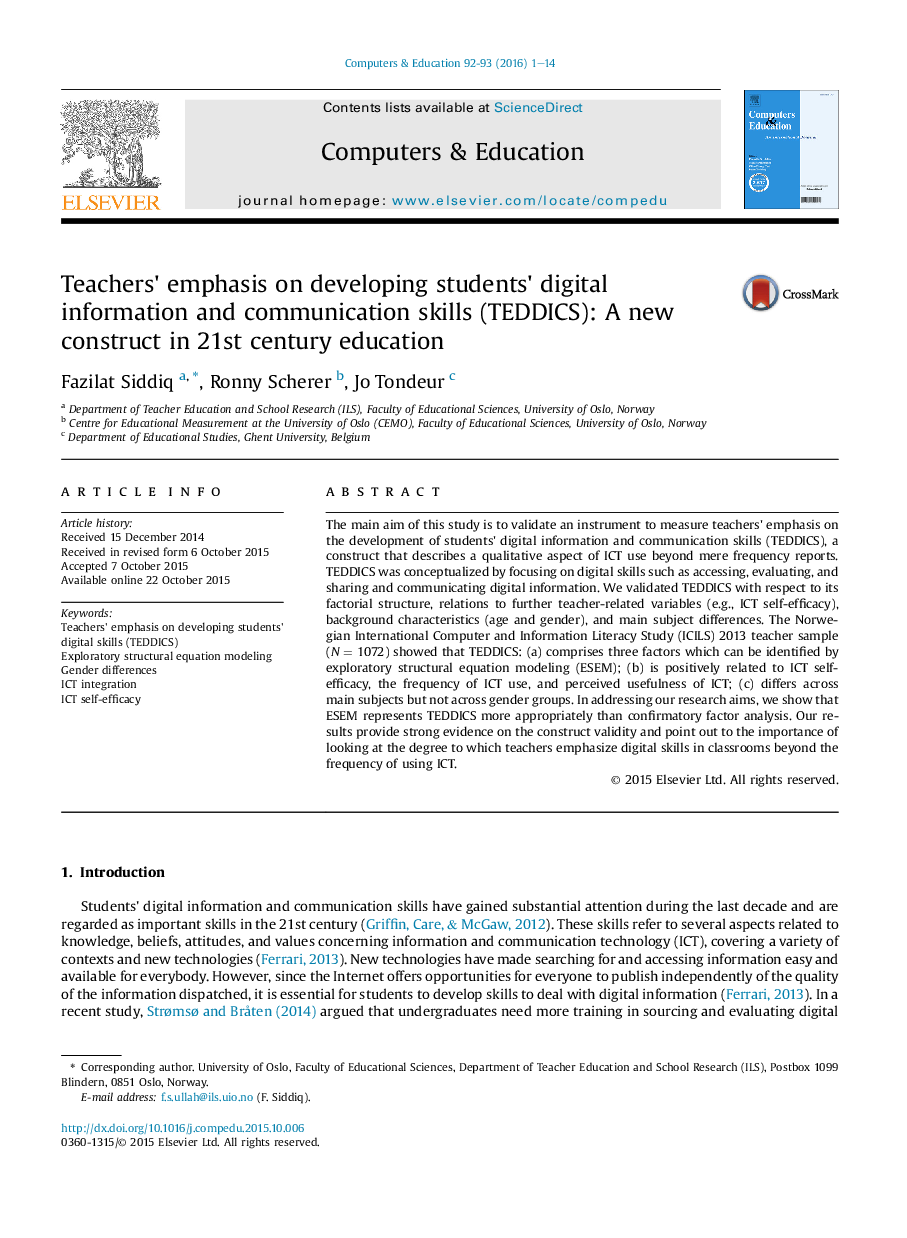| کد مقاله | کد نشریه | سال انتشار | مقاله انگلیسی | نسخه تمام متن |
|---|---|---|---|---|
| 348212 | 618168 | 2016 | 14 صفحه PDF | دانلود رایگان |
• Teachers' emphasis of students' digital skills comprises three dimensions.
• Exploratory structural equation modeling represents the structure of the construct.
• Teachers' emphasis is related to ICT self-efficacy and use (ρ = .27–.72).
• Teachers' emphasis and perceived usefulness of ‘Accessing’ correlate (ρ = .33).
• No gender differences in teachers' emphasis exist, yet subject differences.
The main aim of this study is to validate an instrument to measure teachers' emphasis on the development of students' digital information and communication skills (TEDDICS), a construct that describes a qualitative aspect of ICT use beyond mere frequency reports. TEDDICS was conceptualized by focusing on digital skills such as accessing, evaluating, and sharing and communicating digital information. We validated TEDDICS with respect to its factorial structure, relations to further teacher-related variables (e.g., ICT self-efficacy), background characteristics (age and gender), and main subject differences. The Norwegian International Computer and Information Literacy Study (ICILS) 2013 teacher sample (N = 1072) showed that TEDDICS: (a) comprises three factors which can be identified by exploratory structural equation modeling (ESEM); (b) is positively related to ICT self-efficacy, the frequency of ICT use, and perceived usefulness of ICT; (c) differs across main subjects but not across gender groups. In addressing our research aims, we show that ESEM represents TEDDICS more appropriately than confirmatory factor analysis. Our results provide strong evidence on the construct validity and point out to the importance of looking at the degree to which teachers emphasize digital skills in classrooms beyond the frequency of using ICT.
Journal: Computers & Education - Volumes 92–93, January–February 2016, Pages 1–14
